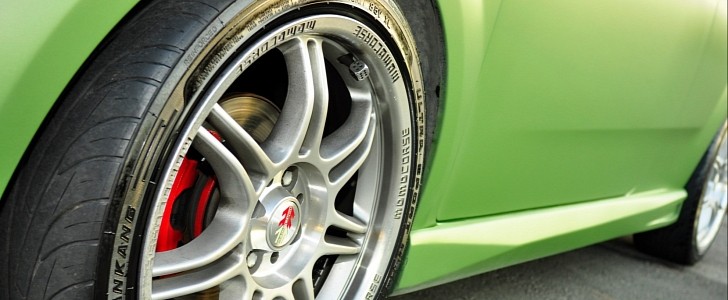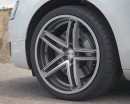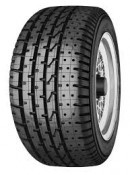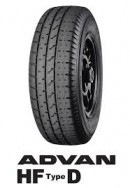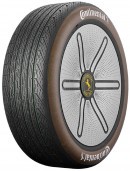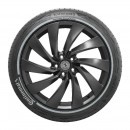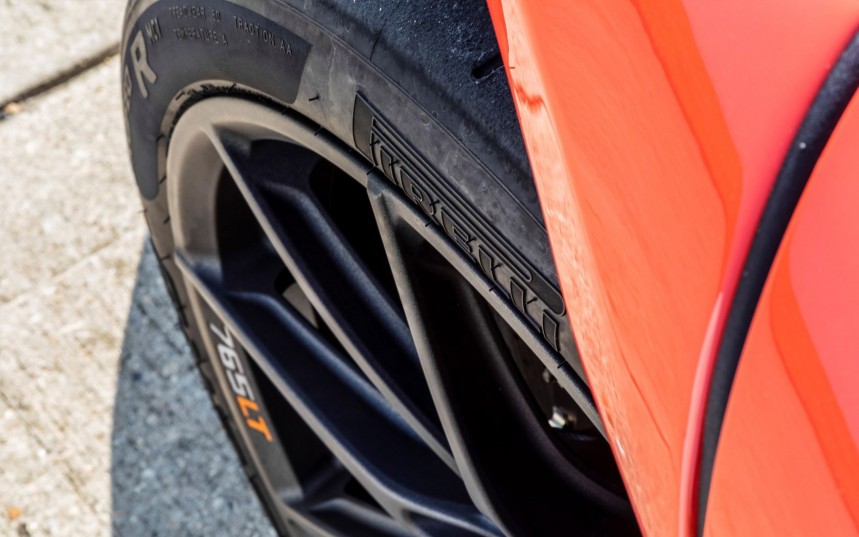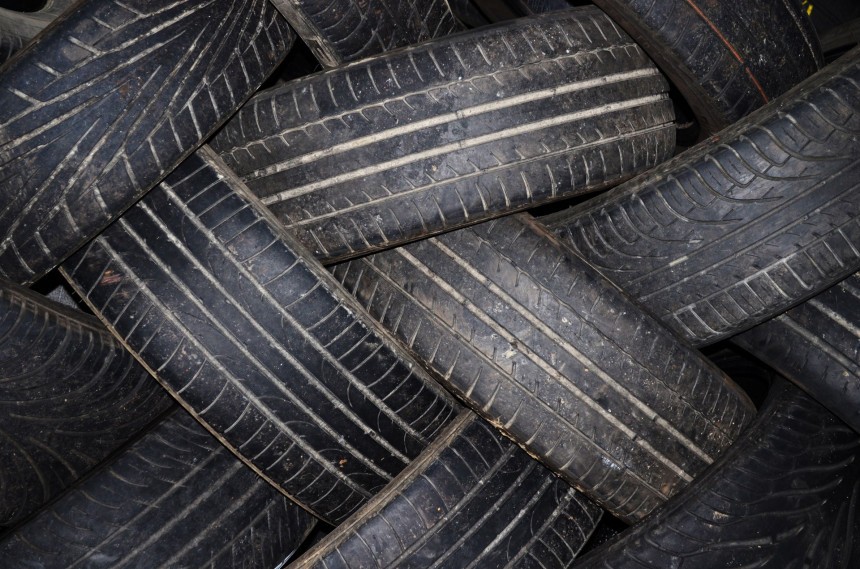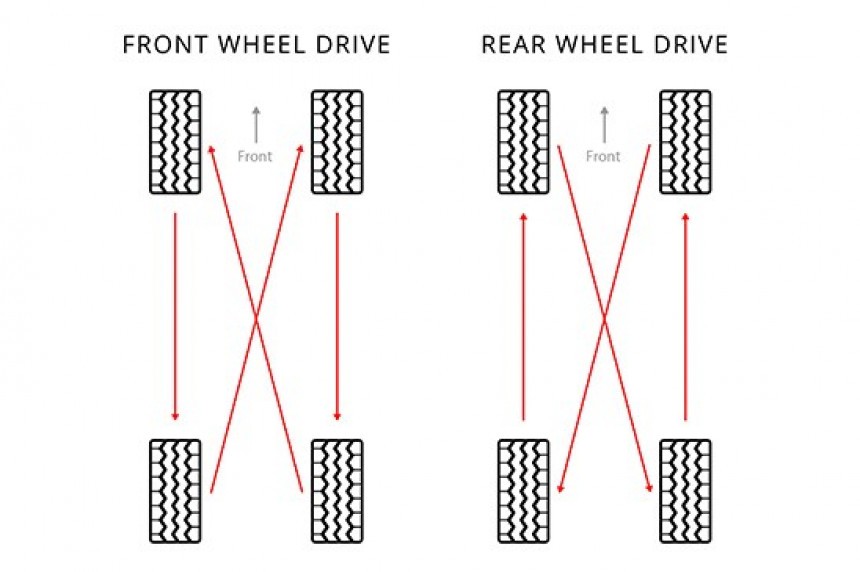Let us imagine a situation where you have just remembered to check your tires after a long time. It does not matter how this happened, but two of your vehicle's tires are too worn to be used anymore. So, do you fit the two new tires on the front axle or the rear axle? We have the answer.
First, the problem is usually reserved for vehicles that have the same tire size all around. If your vehicle has a staggered wheel setup, with wider and larger tires for the rear axle, this will not work for you. Your best course of action in that situation is to get four new tires, all-round. Otherwise, you will significantly affect handling and stability.
Many drivers will say to just replace the two worn-out tires with the two new ones and call it a day. But, unfortunately, things are not that simple. If the two worn-out tires are the ones on the front axle, does replacing them with a set of new ones make everything right? Unfortunately, the short answer is no.
Contrary to widespread belief, if you just buy two new tires, it is not a clever idea to fit them on the front axle. While we admit that it sounds counter-intuitive, it is all about physics. And you do not want to mess with physics, as it has the habit of winning every single time it is challenged.
Why is it wrong to fit two new tires to the front axle? The issue appears in wet conditions when the front tires will have the best possible profile (as they are new) and will proceed to "throw" water back and to the sides.
This would not be an issue if the rear tires were also new and had the same profile and tread depth. But, if the tires on the rear have already reached the halfway point of their usage life, you will set your vehicle up for aquaplaning.
The phenomenon will happen suddenly, and it might happen when you are not paying enough attention to the road or when there is not enough room to counteract the situation.
The other issue with this is one of stability and the balance of each vehicle. Vehicle manufacturers spend vast amounts of money to set each model to behave predictably. When most cars do lose their grip, they tend to understeer, while others have a natural tendency to oversteer.
At this point, you might be thinking to yourself that you like oversteering and that understeer is the enemy. Well, we see your point, but you must consider the fact that those behaviors (understeer and oversteer) will occur when the said vehicle is pushed to the limit in one way or another. In other words, we are referring to "snap oversteering," which is significantly more dangerous than frequent understeering.
While understeer is no fun, ever, it is easier to sense as a driver, and it is easier to counteract. Moreover, it is easier to counteract understeer in an instinctual manner.
All you must do is slow down, which will be most people's instinct when understeering, but you must also refrain from bringing more steering input (the other instinctual action — a wrong one, this time), which will make matters worse.
Things are different when oversteer is concerned, as you must steer into the slide, and then things differ depending on the kind of vehicle you are driving and why its rear axle loses its grip.
In rear-wheel-drive vehicles or some rear-biased all-wheel-drive vehicles, the solution might be to reduce your input on the gas pedal and then try to control the slide with it as the car rebounds after your initial steering response.
In front-wheel-drive vehicles, you must not lift your foot off the gas pedal as the vehicle's rear axle has lost its grip, as you want to use the engine's power to straighten the car back to where you want it to go.
With that part explained, it is understandable why vehicle manufacturers prefer to dial in the possibility of understeer in a vehicle instead of the risk of it tending to snap oversteer.
Now, back to tires. If you fit new tires on the front axle and leave somewhat worn (but still legal) tires on the rear axle, your vehicle will be prone to snap oversteer. It may happen on damp roads, it will happen on wet roads, and again on snow and ice. There is a risk it might happen on dry roads and even with good summer tires front and rear.
While the front axle handles braking and steering, the rear axle is the one that keeps the vehicle stable on the road, whether it is in a straight line, passing another vehicle, or approaching a corner.
In each of these situations, the vehicle has a built-in balance that can be ruined by driving in an aggressive or incorrect style or using worn tires on the rear axle and new ones on the front.
These explanations come from numerous tire experts and racing drivers. We can attest, from personal experience, that snap oversteer can happen regardless of the level of power that a vehicle's engine offers and that it does not matter how many of your vehicle's wheels are driven.
All you must care about is having all of them on the road at the same time, working on getting you where you want to go.
So, as a conclusion, if you have a car that has front-wheel drive and its front tires are worn or need replacement because of another issue, fit the new tires to the rear axle and bring the tires from the rear axle to the front (and rotate them — place the rear right in the front left position, and the rear left in the front right of the vehicle — please refer to your owner's manual for each vehicle's recommended rotation plan).
If your rear-wheel-drive vehicle's front tires need replacing, fit the new ones on the rear axle, while the ones from the rear go on the front axle (remember to rotate these as well).
In the case of an all-wheel-drive vehicle that requires special tires (such as the ones with a star marker on them, as BMW xDrive models need), or other brand-specific tires, it is not recommended to mix used tires with new ones, as this may cause issues with the differential.
In the case of a flat, you can use whatever you can find for a spare until you arrive home but replace your tires as soon as possible to prevent any mechanical damage down the line.
The tires with a star marker are just an example here — check your owner's manual to find out if your vehicle requires a specific type of tire, not just limited to size and brand.
In a vehicle that has four-wheel drive, you must fit a pair of two new tires to the rear axle first, while moving the ones from the rear to the front and rotating them according to the manufacturer's specifications.
Many drivers will say to just replace the two worn-out tires with the two new ones and call it a day. But, unfortunately, things are not that simple. If the two worn-out tires are the ones on the front axle, does replacing them with a set of new ones make everything right? Unfortunately, the short answer is no.
Contrary to widespread belief, if you just buy two new tires, it is not a clever idea to fit them on the front axle. While we admit that it sounds counter-intuitive, it is all about physics. And you do not want to mess with physics, as it has the habit of winning every single time it is challenged.
Why is it wrong to fit two new tires to the front axle? The issue appears in wet conditions when the front tires will have the best possible profile (as they are new) and will proceed to "throw" water back and to the sides.
This would not be an issue if the rear tires were also new and had the same profile and tread depth. But, if the tires on the rear have already reached the halfway point of their usage life, you will set your vehicle up for aquaplaning.
The phenomenon will happen suddenly, and it might happen when you are not paying enough attention to the road or when there is not enough room to counteract the situation.
The other issue with this is one of stability and the balance of each vehicle. Vehicle manufacturers spend vast amounts of money to set each model to behave predictably. When most cars do lose their grip, they tend to understeer, while others have a natural tendency to oversteer.
While understeer is no fun, ever, it is easier to sense as a driver, and it is easier to counteract. Moreover, it is easier to counteract understeer in an instinctual manner.
All you must do is slow down, which will be most people's instinct when understeering, but you must also refrain from bringing more steering input (the other instinctual action — a wrong one, this time), which will make matters worse.
Things are different when oversteer is concerned, as you must steer into the slide, and then things differ depending on the kind of vehicle you are driving and why its rear axle loses its grip.
In rear-wheel-drive vehicles or some rear-biased all-wheel-drive vehicles, the solution might be to reduce your input on the gas pedal and then try to control the slide with it as the car rebounds after your initial steering response.
In front-wheel-drive vehicles, you must not lift your foot off the gas pedal as the vehicle's rear axle has lost its grip, as you want to use the engine's power to straighten the car back to where you want it to go.
With that part explained, it is understandable why vehicle manufacturers prefer to dial in the possibility of understeer in a vehicle instead of the risk of it tending to snap oversteer.
While the front axle handles braking and steering, the rear axle is the one that keeps the vehicle stable on the road, whether it is in a straight line, passing another vehicle, or approaching a corner.
In each of these situations, the vehicle has a built-in balance that can be ruined by driving in an aggressive or incorrect style or using worn tires on the rear axle and new ones on the front.
These explanations come from numerous tire experts and racing drivers. We can attest, from personal experience, that snap oversteer can happen regardless of the level of power that a vehicle's engine offers and that it does not matter how many of your vehicle's wheels are driven.
All you must care about is having all of them on the road at the same time, working on getting you where you want to go.
If your rear-wheel-drive vehicle's front tires need replacing, fit the new ones on the rear axle, while the ones from the rear go on the front axle (remember to rotate these as well).
In the case of an all-wheel-drive vehicle that requires special tires (such as the ones with a star marker on them, as BMW xDrive models need), or other brand-specific tires, it is not recommended to mix used tires with new ones, as this may cause issues with the differential.
In the case of a flat, you can use whatever you can find for a spare until you arrive home but replace your tires as soon as possible to prevent any mechanical damage down the line.
The tires with a star marker are just an example here — check your owner's manual to find out if your vehicle requires a specific type of tire, not just limited to size and brand.
In a vehicle that has four-wheel drive, you must fit a pair of two new tires to the rear axle first, while moving the ones from the rear to the front and rotating them according to the manufacturer's specifications.
